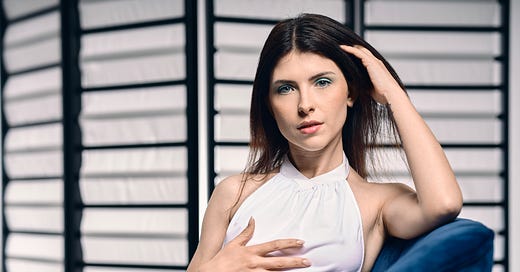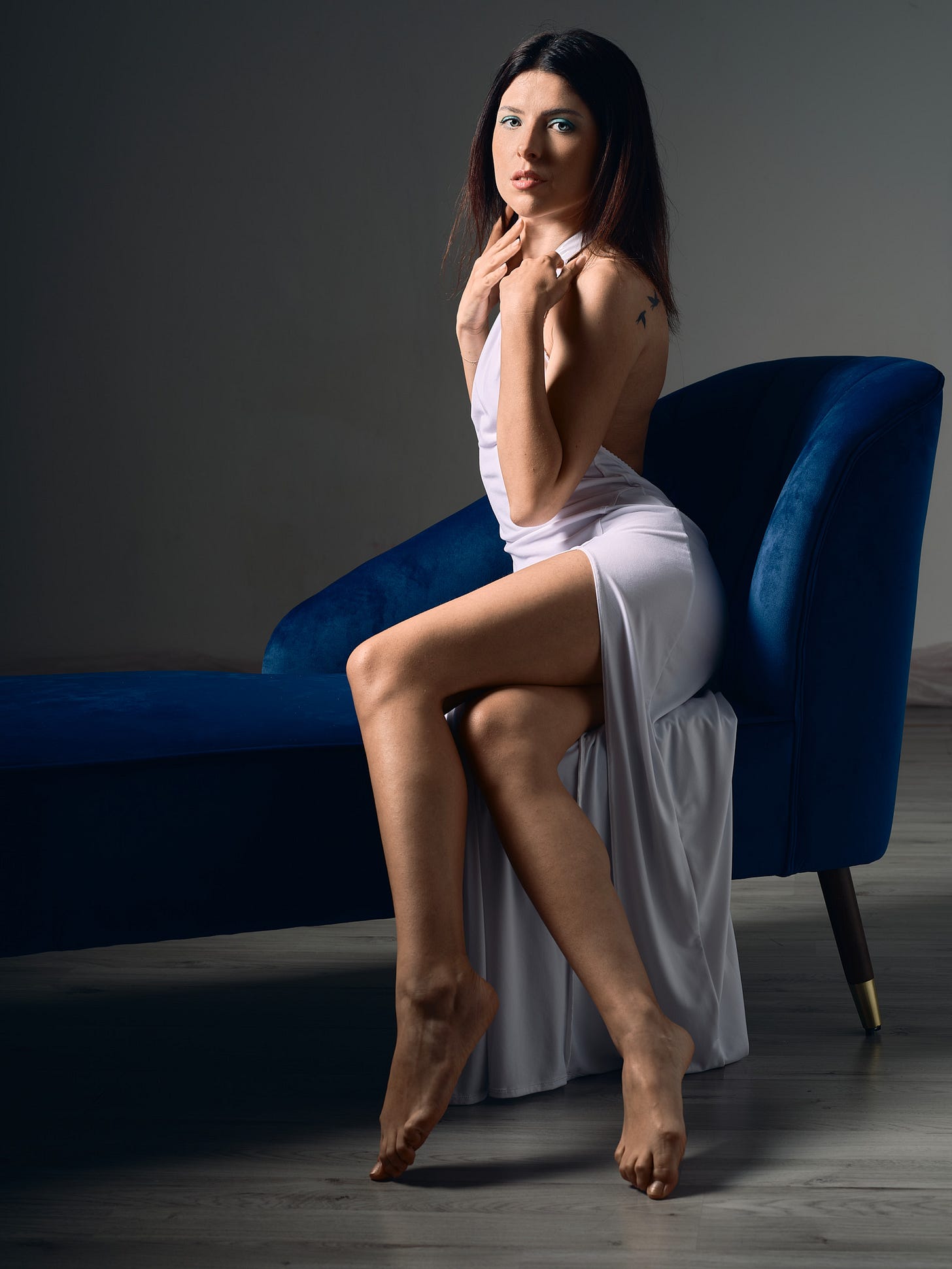Learning Portraits by Watching a Pro
One intense morning, a shared set, and a masterclass in portrait photography I didn’t expect
Good morning and happy Tuesday, my friend!
As always, before I begin, I want to thank everyone who follows me—especially all the new subscribers who joined this newsletter in the past few days and weeks. I truly appreciate it, and I’m glad that every week you take the time to read my articles. Thank you, really.
Now, today I want to talk to you about something that happened to me a few weeks ago.
As you know, I’m a portrait photographer, and I have to say that most of the time—actually, almost exclusively—I’ve always worked alone. Meaning, of course, that setting up a shoot usually involves having models and, when possible, makeup artists, too.
But I’ve rarely worked alongside other photographers.
So, when my friend Lorenzo and I finally had the chance to try doing something together—we had talked about it for ages, but there had never been a real opportunity to plan a set—I jumped at it. Also because Lorenzo is a photographer with many, many, many years of experience.
Knowing him and having seen how he works, for me it was a real opportunity to learn, to try to understand—even just a bit—how a true professional approaches a portrait session.
So we decided to sit down, jot down some ideas, look for some inspiration together, and figure out how we could create a set that would work for both of us.
In the end, we decided to go with a shoot that included several outfits, different lighting setups, and different scenes, even arranging the set so that it would fit the various parts we had planned.
We brought in our makeup artist Sara, and we asked a model I’ve known for a long time—Martina—who I’ve always worked really well with.
We explained to them what we had in mind and set the date for the shoot.
Now, during that session, I realized just how different my approach is compared to that of a professional photographer.
Not in the sense that I can’t set up a shoot, or light it properly, or guide the model.
It’s not about achieving the result—but rather how you get there.
Standing next to Lorenzo and watching how he moves around the set, how he interacts with the model, how he tries different light setups, how he manages everything around the scene—like, for example, the use of props (we had a dresser we were using as part of the scene, plus colored fabrics…)—I realized that, in some ways, that’s the part I lack.
Or at least, I’m not as effective as he is.
So even if I’m usually happy with what I produce when I do a shoot, working with him really opened my eyes to another way of approaching portrait photography.
Of course, he has a ton of experience, he’s been doing this job for a long time, and, probably—actually, definitely—doing this professionally forces him to be more effective.
Because when time equals money, your skills have to be ready on the spot.
You can’t spend half of a four-hour session trying things out, collecting your thoughts, or taking too long to get to that particular setup you had in mind.
So this was a big—huge—lesson for me, because it showed me what my weak spots are.
The things I’m still missing.
All those small details I need to improve in order to get to the result faster.
Now, of course, we have different styles, different ways of being on set—and that’s part of being a creative: everyone has their own way, their own personality, and that affects how you interact with the team.
But what really makes a difference is how fast you can get to the final result.
Looking back at the pictures, both mine and his, they’re obviously different, and I’m happy with what I did—because they reflect my style, the kind of light I like.
Even though I’ll admit Lorenzo kind of called me out—especially during the first part of the shoot—because for some reason I was holding back.
Being there and working side-by-side with someone much more experienced, who could judge me, probably made me a bit tense.
So yeah, that first part of the shoot was kind of flat, the lighting was a bit anonymous.
And I could’ve done more with it—especially knowing I had someone assisting me.
That was actually the whole point: while one was shooting, the other was assisting. And having someone with that much experience helping out could’ve really helped me achieve something better.
But in the end, it was a very, very, very positive experience.
Not just in terms of the final product—the images we created—but especially for the experience I gained in those few hours, just by watching someone who really knows what they’re doing.
And that’s kind of the trick—not just in the creative arts, not just in visual disciplines or anything related to creativity—but in general:
You learn when you make mistakes, and you learn a lot when you observe those who are better than you.
Curiosity isn’t just watching YouTube tutorials or reading photobooks by famous artists.
Curiosity also means standing right behind a professional and watching how they move, how they manage the light, how they shape it, how they direct the model, how they explain their idea, and the words they use.
How they present their vision in a way that’s fully understood by the person on the other side.
That, for me, was a huge lesson.
So I’m really happy I managed to set this up with Lorenzo—and of course, with Martina and Sara too.
Because it was a really intense and incredibly productive morning.
Take care and talk soon!









I used to shoot weddings for friends and family who couldn’t afford a pro. The results were always good - and well received - but I knew that they could have been better if I’d had more time to spend getting the main participants to work with me instead of chasing around, caught up in the big day. I’ve only worked with real, experienced models a few times and it was so much easier as both parties knew what each other wanted. I generally avoid people shoots these days and if I ever shoot another wedding it will be too soon!!!